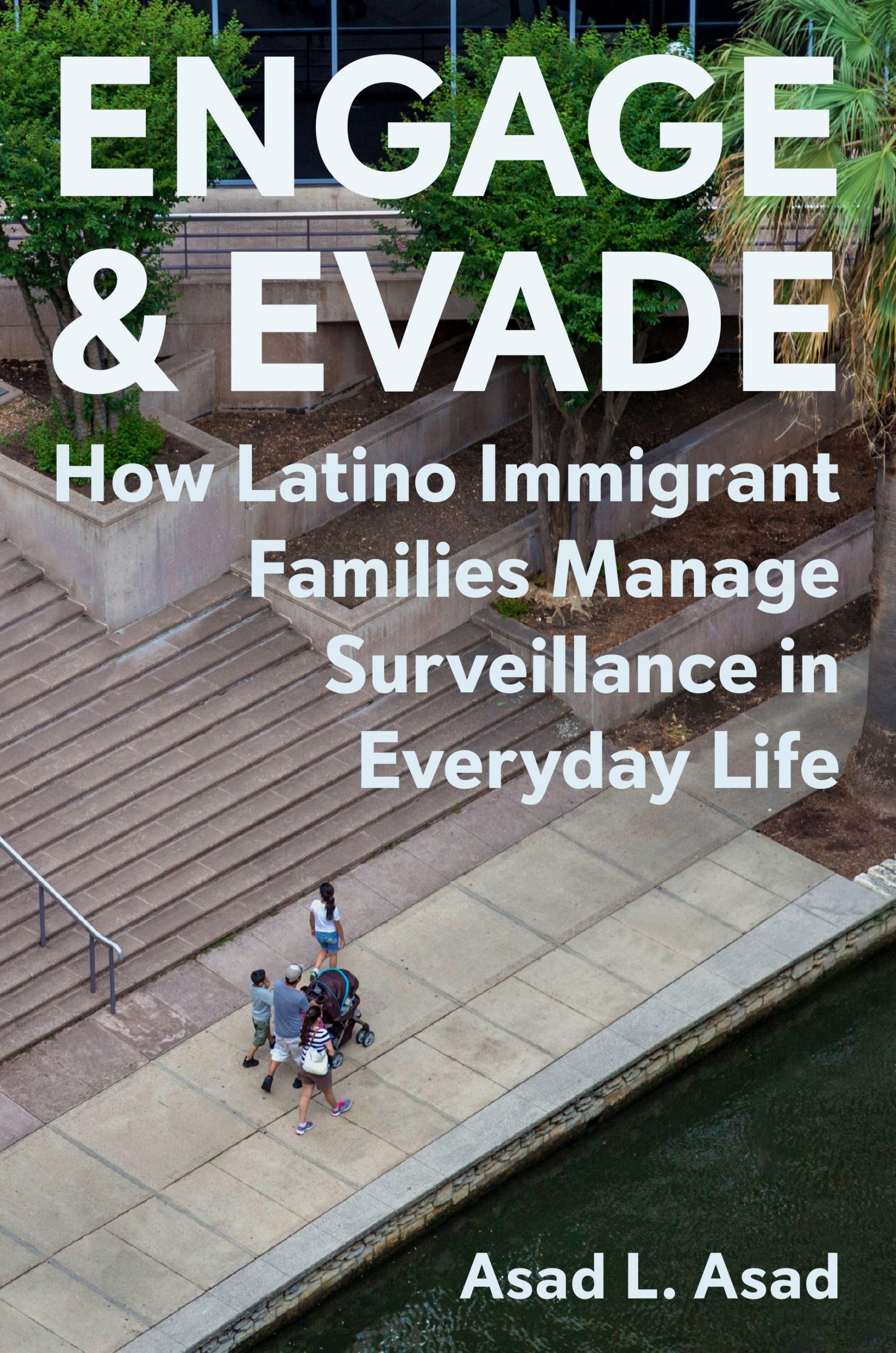Maite, in her late thirties when I met her in 2013, has an infectious optimism about her. “This is a country of opportunity,” she tells me. It’s not hard to see why she feels this way. Despite the stress of managing both a sudden divorce and the pains of breast cancer treatment, she continues to steward a successful small business selling housewares door-to-door. Her older daughter is about to graduate from Texas’s flagship public university and has started looking into medical school; her younger daughter is top of her high school’s honor roll. Maite has not had it easy over the last few years, but she is proud of her daughters and determined in the pursuit of her dreams.
Determined is perhaps an understatement. Maite’s various struggles, ordinary in the sense that they could happen to anyone, take on added weight because she lives in the United States without authorization from the federal government. Colloquially, Maite is an undocumented immigrant. She’s not alone in that regard. Within her household, her older daughter is also undocumented. In Dallas, her county of residence, 273,000 people are. In Texas, that number is 1.6 million. Nationwide, it’s about 10.6 million.
About two-thirds of undocumented immigrants are from Mexico or Central America, and over 60 percent have lived in the United States for at least ten years. Despite their colloquial designation as undocumented, their everyday lives are, in fact, routinely documented by various mainstream institutions, including governmental. Undocumented immigrants live within a tangled web of institutional surveillance that both threatens and maintains their societal presence as they deal with life’s ups and downs.
Multiple and sometimes competing binaries—characterized by both exclusion from and inclusion in mainstream institutions—are a feature of undocumented life in the United States. The federal government denies Maite permission to live and work in the country, but it allows her to run her own business with an Individual Tax Identification Number (ITIN) from the Internal Revenue Service (IRS). The federal government requires Maite to pay into Medicare and Social Security, health and social insurance programs whose benefits she is barred from accessing. Texas denies Maite and her eldest daughter access to Medicaid, a health insurance program for people with limited financial resources, but Maite pays out of pocket for private health insurance while enrolling her U.S.-born daughter in Medicaid. Her eldest daughter is one of an estimated 22,000 undocumented students in the University of Texas system, in a state whose governor and attorney general are not shy about advocating for anti-immigrant laws, regulations, and policies that would disadvantage these very students. This same daughter has access to state-provided, need-based financial aid for college but cannot enroll in medical school in Texas.
In brief, Maite and her family are not off the radar; they are squarely on it.
Maite’s story demonstrates the everyday forms of surveillance endemic to contemporary life in the United States. By everyday forms of surveillance, I mean the process by which authorities in mainstream institutions—hospitals, banks, employers, schools, and the like—monitor their clients (e.g., patients, customers, workers, students) as they interact with one another. Authorities include a range of possible actors, including many directly relevant to the institution’s operations (e.g., doctors and nurses) and others less directly so (e.g., police officers). The surveillance these authorities enact isn’t unique to people living in the United States without authorization, but it weighs on them differently than it otherwise might were they U.S. citizens. And that is because the everyday surveillance of these immigrants can mean the difference between their durable presence in the United States (via legalization) or their immediate exclusion from the country (via deportation).
In my new book Engage and Evade: How Latino Immigrant Families Manage Surveillance in Everyday Life, I describe undocumented immigrants as exhibiting a selective engagement with the mainstream institutions that surveil them regularly. This selective engagement, which includes a twin dynamic of seeking out and avoiding these institutions and the authorities within them, is born of necessity. To live in the United States without authorization means facing overlapping forms of legal, financial, and social hardship. This hardship seldom starts in the United States, but it is compounded as people set up their lives here as undocumented immigrants. They had relatively few financial and social resources to begin with but face numerous federal and—depending on where they live—state and local government-imposed hurdles to securing those resources. Engagement with mainstream institutions, however circumscribed or selective that may be, emerges as a prudent strategy.
As philosopher Michel Foucault explored, surveillance entails elements of both risk and reward. Mainstream institutions can dole out punishment: A police officer can arrest someone for driving without a license that their state denies them, or a teacher may report an undocumented parent to Child Protective Services (CPS). But such authorities also dole out important resources: The IRS can provide an ITIN that makes it possible to run a business, or a child born here can be eligible for public assistance even when their immigrant parent is ineligible. And these kinds of help, possible only by navigating the dangerous waters of mainstream institutions, can be what make it sustainable to remain in the country. Opening oneself to surveillance thus carries the threat of societal exclusion as well as the possibility of inclusion.
For most everyone I interviewed, policing and work are the two institutions that most preoccupied them when setting up their lives in the United States. They had come so far, and risked so much, to enter the country. And yet they still had to find a way to support themselves without also landing in the custody of a police or immigration officer. But the federal government denies undocumented immigrants permission to work, even as it depends on their essential labor in various industries foundational to the U.S. economy. Some undocumented immigrants I came to know admitted that they had committed a “crime of necessity” by purchasing papeles chuecos (false identity documents, usually a social security card and green card) upon arrival. They could submit them to their employers, who they assumed knew of their forgery but accepted them as cover because it is illegal for employers to “knowingly” hire undocumented immigrants. Papeles chuecos helped them land a job—often unpaid or otherwise exploitative—but a job nonetheless. And they needed that job to support themselves and the families they had left behind.
Few undocumented immigrants I profiled felt good about their papeles chuecos. They worried that, were police or immigration officers to discover these documents, it would give these authorities reason to deport them. Over time, many came to learn about another path forward: the ITIN from the IRS. The U.S. Treasury created the ITIN in 1996, in part because of the federal government’s 1972 decision to deny undocumented immigrants a social security number. An ITIN, receipt of which requires application to the IRS with at least two documents that prove age and identity, is not proof of any person’s work authorization. But an ITIN can be used alongside papeles chuecos to file taxes with the IRS each year, which some undocumented immigrants I talked to thought would demonstrate to authorities that compliance with the law was integral to their daily lives. An ITIN can also be used independent of papeles chuecos to allow undocumented immigrants to work as freelance contractors in various industries (e.g., construction, housekeeping, and landscaping). This is not only legal under federal law but also something that the IRS encourages for undocumented immigrants who hope to legalize one day. Overall, about 4.4 million people file taxes each year using an ITIN, including most of the employed undocumented immigrants I interviewed for Engage and Evade.
More from our decarceral brainstorm
Every week, Inquest aims to bring you insights from people thinking through and working for a world without mass incarceration.
Sign up for our newsletter for the latest.
Newsletter
Throughout their time in the United States, most of the undocumented immigrants I interviewed had selectively engaged with a number of institutions related to health care, public assistance, and education. The federal government guarantees the right to a K–12 public school education, regardless of legal status. But beyond that, a hodgepodge of complex federal and state rules govern undocumented immigrants’ health care use and access to public assistance. As a result, the people I interviewed reported that they had, on the whole, attempted for many years to simply avoid these institutions, frequently at great cost to their health and well-being. Even when federal or state law had narrow carveouts that would permit undocumented immigrants’ engagement with one or more of these institutions, they believed that this carveout was the exception that proved the rule: Avoidance is what they felt authorities in these mainstream institutions (e.g., doctors, nurses, and social workers) expected of them—and it was almost certainly what immigration officers expected of them.
But, as they settled into their lives in the United States, all went on to have at least one U.S.-born child. And they realized that those compounding hardships had taken on new meaning: They were no longer just undocumented immigrants; they were also working-class and poor Latino parents to citizen children. They had to find a way to contend with authorities’ racialized and classed scrutiny of their parenting. Even as it exposed them to more surveillance than they liked, selective engagement with authorities in health care, public assistance, and educational institutions offered their children important resources and staved off other, more forceful interventions in family life—such as referrals to the police or CPS. All undocumented parents I talked to mentioned engagement with at least one of these institutions on behalf of their kids, even as they were adamant that they did not use these resources for themselves because that would contravene their perceived responsibilities as undocumented immigrants who do not want to “burden” the government.
Undocumented immigrants selectively engage with mainstream institutions to counteract the inequalities built into the myriad laws, regulations, and policies that not only deny them rights to work authorization and public assistance but also seek to punish them. Institutional evasion and inclusion are two sides of the same coin for undocumented immigrants. For people who belong to other groups worried about state punishment—low-income parents, welfare recipients, those with criminal records—this tension is likely to feel familiar.
Returning to Maite’s story, we see how her selective engagement with mainstream institutions is at once necessary and coercive. For all her success in carving out a life in this country, Maite remains an undocumented immigrant with no pathway to citizenship in sight. Her efforts to manage everyday forms of surveillance have allowed her and her family to make a life in the United States. And, though she believes she is doing right by the country, she recognizes that a rigid set of immigration laws, regulations, and policies keep families like hers at arm’s length. Maite is not sure what the future holds for her but remains optimistic that, after all the hardships she has faced over more than a decade in the country, something good is coming: “De algo malo viene algo bueno.” It’s a nice sentiment. I hope she’s right.
This article is adapted by the author from an article that originally appeared in July 2023 in Footnotes magazine, an online publication of the American Sociological Association. All rights reserved.
Image: Jr Korpa/Unsplash


